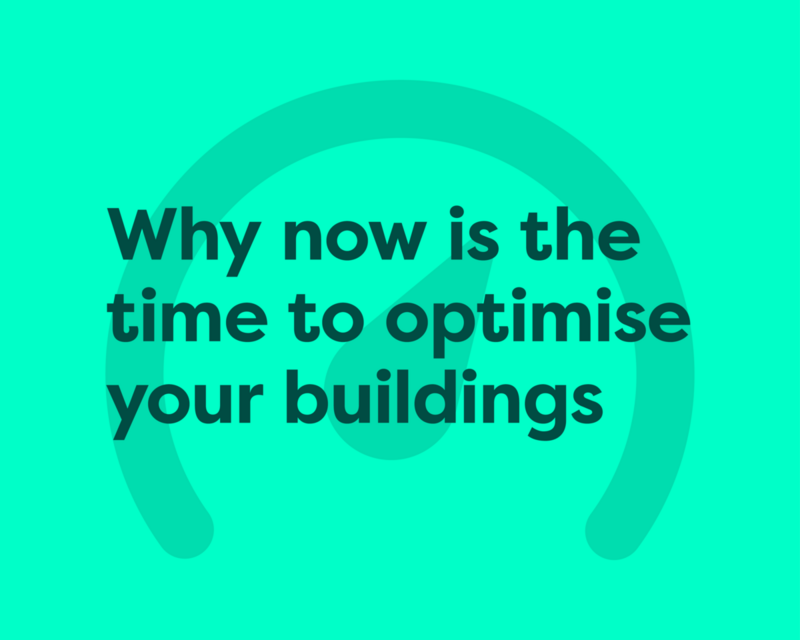Why now is the time to optimise your buildings

With growing demand for NABERS ratings and rising ESG expectations, building optimisation is no longer optional - it’s a strategic priority. It helps meet decarbonisation goals for minimal upfront cost, extends asset life, and enables cost savings. Thanks to advances in tech, optimisation can generate significant savings when done in the right way. A great starting point is collecting data and transforming it into actionable insights.
Our recent webinar, The case for building optimisation: Act now to reduce costs and deliver value, focused on optimising buildings – that is, helping them to operate as they were designed to and closing the performance gap.
Verco experts Andries van der Walt, Bethan Phillips, Jonathan Foster and Robert Cohen were joined by guest speaker James Hobbs from Bueno to explore why optimisation is more critical than ever. They highlighted how advances in technology are simplifying the process, and illustrated what effective optimisation looks like in practice through two practical case studies.
You can watch the full recording of the webinar here or read a short summary of the key points below.
Why is now a good time to optimise buildings?
The business case for optimisation is compelling. Energy is a major controllable cost in commercial buildings, and optimisation delivers rapid consumption cuts with strong payback, often within one service charge cycle. The recently updated RICS guidance enhances the financial case, giving landlords more flexibility to recover costs for projects with solid returns.

At a strategic level, with greater visibility on energy performance and carbon emissions, acting now helps future-proof assets and avoid future compliance risks. Optimisation demonstrates proactive leadership in sustainability and ESG performance at a time when this is being actively sought after. It helps to meet rising expectations from owners, investors, and occupiers. The demand for NABERS ratings is growing, which reflects a market shift towards performance-led decision-making.
Identifying optimisation opportunities can also help to extend the life and reliability of existing plant and controls. This can delay costly replacements and allow data-driven decisions to be made whenever upgrades are truly necessary.
Bethan explained that, when done in the right way, optimisation is a priority for delivering on net zero commitments and cost savings. It also offers wider benefits such as an improved indoor environment for tenants.
How have improvements in technology made the process easier?

James Hobbs, whose company, Bueno, is known for its powerful building analytics, said: “There is plenty of data in your buildings that you can put to good use and turn into immediate savings.”
Historically, a building’s operational data resided in siloed building systems. These are typically difficult to access and only intuitive to a small number of technical users. In contrast, now we can integrate metering systems, building management systems, IoT devices, sensors, etc. to create a unified view. This allows the data to be more widely understood and far more easily managed and maintained.
Building analytics can now take on the heavy lifting in terms of identifying issues and opportunities that can improve building performance.
Case study 1: what does building optimisation look like in practice?
In the first case study we presented, our client wanted to unlock greater operational efficiency and gain clearer insights across five properties. They needed smarter reporting and transparent disclosure to drive performance and demonstrate results. To help them, Bueno provides the technology and Verco provides the technical knowledge, acting as the human interface between the technology and the site teams, but also creating actionable insights.

Buildings generate a vast amount of data that reveals system health. By combining automated fault detection and diagnosis (FDD) with engineering analysis, we can access and interpret this large data pool to act quickly and deliver performance improvements much more effectively than with traditional BMS platforms alone.
Jonathan gave as an example how the platform flagged that one of the cooling pumps was operating at an unusually high differential pressure. Verco investigated and discovered elevated chilled water return temperatures. After briefing the site team, they traced the issue to incorrectly installed tenant equipment. Working together, we isolated the fault and implemented a resolution plan. This demonstrates the power of rapid fault detection and collaborative problem-solving.
Case study 2: the deep-dive approach to transforming performance
In the second case study, Robert looked at an intensive building optimisation project for a large commercial office. Over a two-year programme following a discovery phase, Verco conducted deep dive BMS reviews, implementing changes to controls and tracking energy performance with the aim of reaching a NABERS UK 4 stars base building rating.

Verco views the control and measurement systems and makes its diagnoses remotely, although initially several visits were made to develop familiarity with the site. Building a strong personal rapport with site operatives is crucial in achieving a timely implementation of recommended changes. Verco focuses on accurate Description of Operations (DesOps) documentation and functional control descriptions. Rushed commissioning often means there are discrepancies between these documents and what the BMS is doing. Sometimes, the solution is updating documentation to reflect a sound control strategy; at other times, it’s fine-tuning control settings or algorithms to achieve the efficiency intended by the designers.
Robert’s advice is: “don’t underestimate the importance of keeping DesOps documentation up to date and aligned with actuality in the field.”
Watch the webinar on demand to hear more about these case studies on successful building optimisation strategies.
Optimise your building and maximise value with our Building Optimisation service
We transform building performance to achieve immediate savings and lasting improvements with minimal capital outlay. By combining advanced analytics and deep industry expertise, our approach can deliver:
up to 30% energy savings;
longer equipment life;
lower operating costs;
improved tenant working environments; and potentially
long-term asset value uplifts.